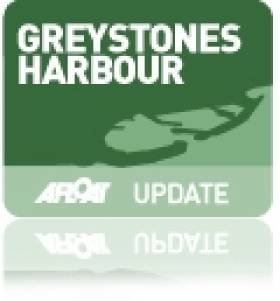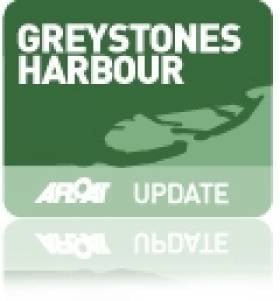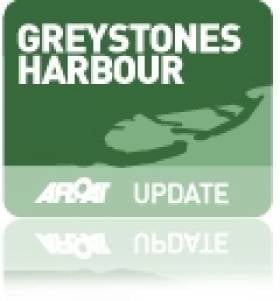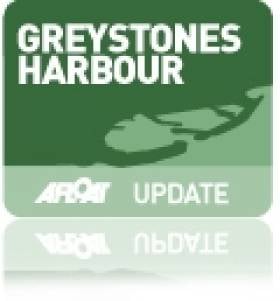Displaying items by tag: Sispar
NAMA Reviews Further Development of Greystones Harbour
The National Asset Management Agency (NAMA) is currently reviewing plans to continue development of Greystones Harbour, WicklowNews.net reports.
NAMA, which took over the loans connected to the controversial €300 million development, has received Sispar's business plan for developing the proposed public walkway and retail units, as well as amenities for water users, further to proposals outlined in June.
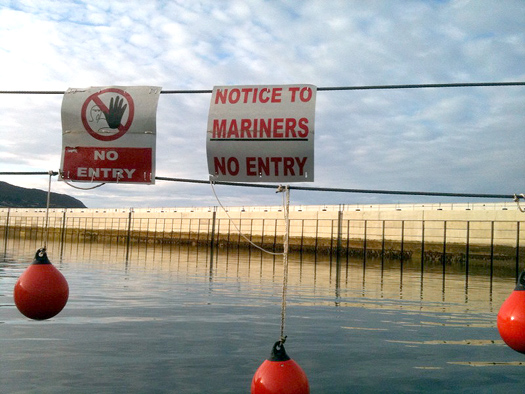
Signs and buoys strung across Greystones harbour to keep mariners out of the new basin
It is expected that the limited development could be completed by September next year, pending NAMA approval. The agency is set to announce its decision next month.
WicklowNews.net has more on the story HERE.
Councillor Derek Mitchell says Greystones Harbour will be open in early September. The news follows a meeting between developers, Sispar, and the Town Council.
According to Mitchell, Sispar told a meeting of Town Councillors that they intend to open temporary facilities at Greystones Harbour by the end of August.
This will consist of:
· Taking down most hoardings and replacing with decorative railings thus opening up the views. The railings are already being made.
· Opening the harbour beach and second public slipway which is a calmer one.
· Fencing the entire area to be given to clubs for boat parking, greatly improving facilities for Anglers, Rowers, Sea Scouts, Divers and Sailors.
· Car Parking and wide access to the new South Pier.
· Starting building the Primary Health Centre by September 2011 and completing within 12 months. This will allow part of the public square to be finished.
· Provide some moorings.
· If there is no development of homes in 18 months time they will landscape the Public Park to the North.
They will review demand for the marina and hope to put in temporary facilities at least during 2012.
These items implement most of my plan and I welcome the good news of both good facilities and starting the Health Centre this year. There will be further consultation with harbour users and residents next week. The plan will then be finalised and implemented.
Parts of Greystones Harbour to Reopen to the Public
Parts of the paused development of Greystones Harbour are to be opened to the public, it has emerged.
According to The Irish Times, developers behind the €300 million plan are delivering a newsletter to residents in the Wicklow town listing its options for the harbour, the first phase of which was mostly completed this year.
These include landscaping parts of the site and reopening much of the area to public access while the second phase - which will include new facilities for clubs using the harbour - gets underway. Phase three is currently stalled dependent on funding.
Developer Sispar has already confirmed it will remove seconds of hoardings from around the harbour.
The Irish Times has more on the story HERE.
Greystones Harbour Hoardings Could Soon Come Down
The partially redeveloped Greystones Harbour could be opened to the public by mid-summer, The Irish Times reports.
Hoardings may come down to open the marine sections of the €300 million development while plans are finalised to complete the rest of the project - which includes new harbour marina facilities, commercial units, homes and recreational spaces.
A spokesperson for development consortium Sispar said the decision on finding the next phase rests with that National Assets Management Agency (Nama).
Wicklow County Council chairman Tom Fortune said he was hopeful that the hoardings around the harbour area would come down later this year “in part at least”.
The Irish Times has more on the story HERE.
Greystones Harbour Open Day Gives Chance to See Impressive Marine Works
This is a chance, says local councillor Derek Mitchell, to see what has been achieved behind the hoardings in the last two years. "All marine works will be finished in 2010 and it is impressive to see what has been achieved. Currently much of the earth stored on top of D'Arcys field is being moved to beside the new harbour and it is quite mucky which limits the area which the public can access. However it will be a good chance to see behind the hoardings" Mitchell told Afloat.ie.
The next stage will start in January and finish in December 2011 after which most hoardings will come down. This stage consists of the 4 storey Health Centre, public square and free clubhouses for the Sea Scouts, Rowers, Divers, Sailors and Anglers.
Greystones Harbour Facilities to be Complete by End 2011
Tuesday nights Greystones Town Council meeting was informed by Greystones harbour developer Sispar that the major work on the seawalls would be complete at the end of November 2010.
Following this, construction of the Health Centre, public square and Community buildings for the Sea Scouts, Rowers, Anglers, Divers and Sailors will start in January and should be complete in December 2011.
The hoardings which have blocked the view of the harbour and proposed marina will be taken down as these works are completed in 2011.
Local councillor Derek Mitchell (and a Ruffian keelboat champion) told Afloat.ie: "I welcome this as Greystones had been trying to get the harbour rebuilt for over a hundred years and this will create the best Community Harbour in Ireland".
Councillor Mitchell adds "The developer has applied to change some of the housing and add 34 houses to the North. Wicklow County Council is to vote on this in December. These houses may not be built yet, depending on the housing market, but access will be provided across the site to the North Beach and the new swimming beach there"
"The meeting was also told that the loan would be going in to NAMA, as all loans will, however this is not expected to make any difference to the project", he added.
Councillors asked for more Community tours so that people could see what has been achieved.





























